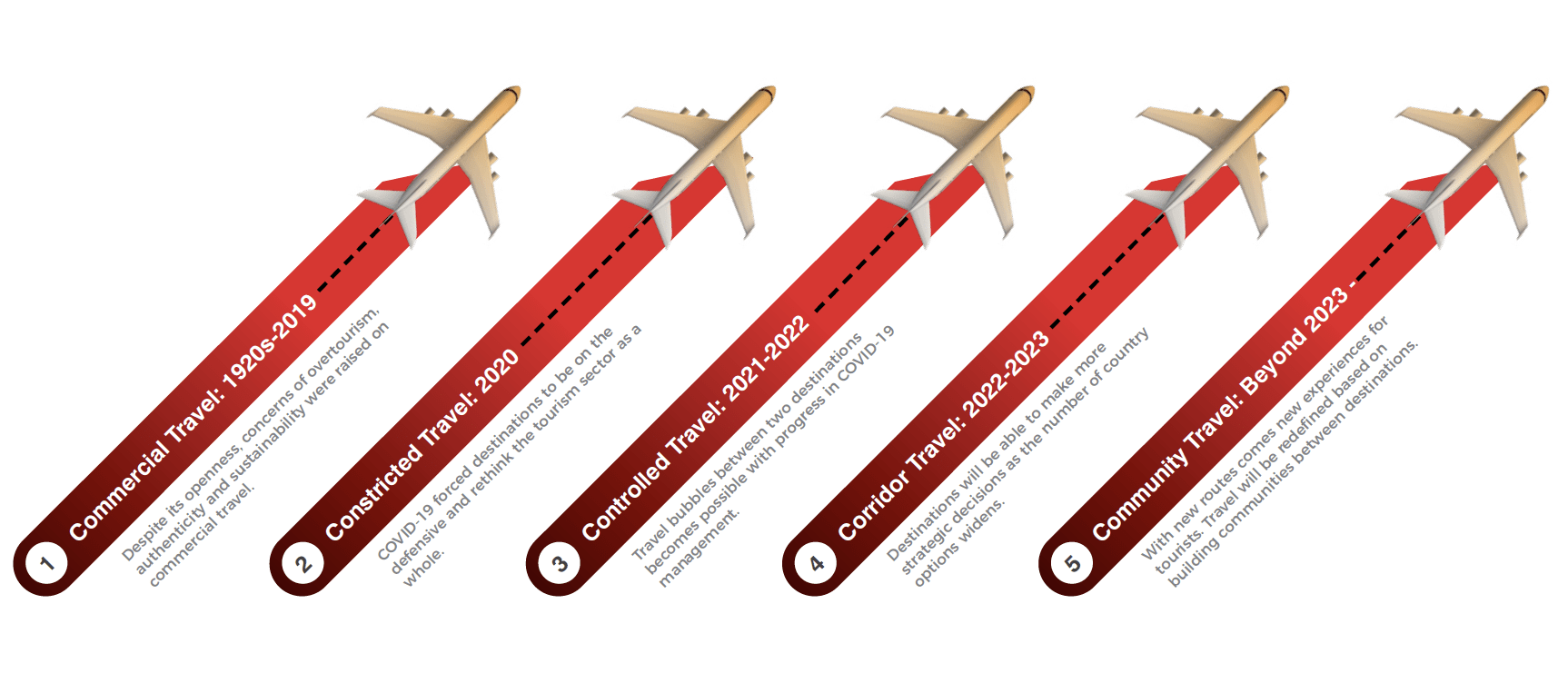
CrescrentRating and Mastercard are proud to present the results of the 6th edition of the Global Muslim Travel Index (GMTI).
As we tread the path towards full recovery with cautious optimism, we believe the findings and the GMTI 2021 rankings would be of great help for destinations around the world that are gearing up for the resumption of Muslim travel.
In turn, we launched a series of reports to provide stakeholders with in-depth insights on how to prepare for the return of international travels. In this article, we will take a deeper dive into the fate of Muslim travel market in a post-pandemic era.
Countries in Southeast Asia are still the topnotchers in our latest GMTI rankings. However, as new variants, particularly the dreaded Delta mutation, ravaged the region in mid-2021, doubts on tourism’s quick recovery resurfaced.
We have developed the Travel Readiness Report in 2020, a simulation designed to give us a clearer picture of the recovery phases of Southeast Asia’s tourism sector.
With the variant-driven threats of COVID-19 dragging on up to mid-2021, our plausible projection shows that the region may only regain 80% of its 2019 levels by the middle of 2023.
In 2020, we hypothesized that the ASEAN travel industry’s recovery rate could reach 71% of its 2019 levels by mid-2022.
However, it is also important to note that massive COVID-19 vaccination programs are being initiated in Southeast Asia. We strongly believe that vaccination has the biggest role in suppressing COVID-19 from being a pandemic to an endemic.
As a result, we stood by our earlier predictions that ASEAN’s tourism industry may be able to capture 31% of its 2019 levels by mid-2022.
When lockdowns were introduced in 2020, the total number of international Muslim traveler arrivals took a nosedive. It interrupted a growing trend of Muslims traveling globally that began in 2013.
Muslim travel peaked in 2019 when we recorded a total of 160 million arrivals, an approximately 48% increase compared to the 108 million in 2013.
In 2020, as the pandemic spread, the numbers of international Muslim traveler arrivals dropped to 42 million. Around 90% of these trips were registered during the first quarter of the year, months before states imposed border controls.
A slump in Muslim travel will likely continue this 2021, especially with the emergence of newly discovered mutations of COVID-19. We predicted that in 2021, there will be only around 26 million trips made as countries kept their doors shut from tourists and other non-essential travelers.
But these figures will start to pick up in 2022 as the results of massive vaccination campaigns, and more efficient testing and control measures come to fruition. If these gains will be sustained throughout 2022, by 2023, the Muslim travel market may reach up to 128 million, equivalent to 80% of the trips made in 2019.
COVID-19 was not only a tough phase for tourism. It was also an eye-opening lesson that would eventually become an opportunity for stakeholders to take a step back, and reevaluate the travel and hospitality industries as a whole.
For nearly a century, commercial traveling has been virtually unchanged. Although innovations and improvements have been constantly made, its core objectives remained the same. These included rapid development of potential tourist sites, renovating airports to accommodate more passengers, to name some.
But as recovery efforts gradually gain momentum, players must take note that things would not be the same.
With COVID-19 still lingering, strategic and calculated moves will lead players in developing new experiences for future travelers. More specifically, to gradually evolve from controlled to community-building travel starting 2021.
We believe that travel bubbles and other forms of controlled Muslim travel will remain the most dominant mode of traveling between 2021 and 2022.
Eventually, several restrictions and regulations will be eased between 2022 and 2023 as we project more destinations implementing innovations in the tourism economy as well as in managing COVID-19 outbreaks in their respective territories.
Finally, a new face of traveling is expected in the years beyond 2023, and it will emphasize the importance of balancing health, well-being, and the economy.
Before COVID put international travel to a halt, the world saw 160 million Muslim travel arrivals. The pandemic may have cut short the growing number of Muslim travel but thanks to the ongoing vaccination drives, and innovations in testing and controlling the outbreak, these difficult times will only be temporary. We hope these insights greatly contribute to stakeholders in the Muslim travel market in their preparations for the full-blown resumption of global Muslim travel.
Download the full report here.